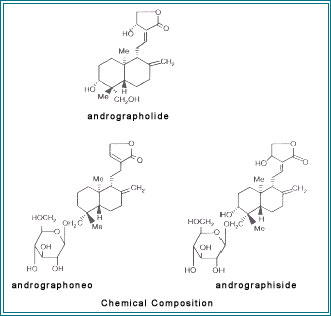[font=Arial, Helvetica, sans-serif]Hempedu Bumi Plus[/font][font=Arial, Helvetica, sans-serif]The many health benefits of Andrographis paniculata (Hempedu Bumi), makes this product a must in every home![/font]
[font=Arial, Helvetica, sans-serif]Hempedu Bumi Plus is considered a "First Aid kit in a capsule" due to its ability to to reduce the harmful effects of dietary fats and environmental toxins, maintain healthy liver function, fight bacterial and viral infections and enhance the digestive process. These are; Andrographis paniculata, Phyllanthus niruri and Curcuma longa. [/font]
[font=Arial, Helvetica, sans-serif]The liver performs hundreds of functions, and is compared to a "chemical factory". It is not surprising that if the liver does not function well, our health is affected in many ways. One of the liver's primary tasks is to filter toxins, a function for which it is often overworked and put under stress by various factors of modern living. If prolonged, these stresses can lead to liver disease and subsequent toxic overload. The major stress factors are environmental pollutants, food toxins, saturated and fried oils, certain drugs, hepatitis, smoking and alcohol. Our immune system is also under attack from microorganisms such as bacteria and viruses that invade our first line of defense in our respiratory airways and cause the common cold, sinus infections, sore throat and bronchitis.[/font]
[font=Arial, Helvetica, sans-serif]
 A bitter tonic, Hempedu Bumi (Andrographis paniculata) is shown to be superior to Milk Thistle (Silymarin) in its liver protective and bile promoting properties. In Scandinavia this plant is now the top selling herbal product for fighting infections, replacing the North American herb Echinacea. In Malaysia, its name means "Bile of the Earth". The active constituents, the andrographolides act as strong antioxidants, protecting the liver and digestive system. Laboratory and clinical trials have demonstrated its effectiveness in cases of toxic liver damage, poor liver function and hepatitis. Together with its effects on the liver and digestion Hempedu Bumi is also shown to prevent the build up of cholesterol in the circulatory system to a degree that was more substantial than fish oils. It is particularly suited to those on a high cholesterol diet. Traditionally the herb is also used for high blood pressure and modern research has also confirmed its gentle and safe hypotensive effects.[/font]
A bitter tonic, Hempedu Bumi (Andrographis paniculata) is shown to be superior to Milk Thistle (Silymarin) in its liver protective and bile promoting properties. In Scandinavia this plant is now the top selling herbal product for fighting infections, replacing the North American herb Echinacea. In Malaysia, its name means "Bile of the Earth". The active constituents, the andrographolides act as strong antioxidants, protecting the liver and digestive system. Laboratory and clinical trials have demonstrated its effectiveness in cases of toxic liver damage, poor liver function and hepatitis. Together with its effects on the liver and digestion Hempedu Bumi is also shown to prevent the build up of cholesterol in the circulatory system to a degree that was more substantial than fish oils. It is particularly suited to those on a high cholesterol diet. Traditionally the herb is also used for high blood pressure and modern research has also confirmed its gentle and safe hypotensive effects.[/font]
[font=Arial, Helvetica, sans-serif]The most recent research on this herb is focusing on its immune enhancing and anti-viral properties, even against several strains of the HIV virus. In China it is the herb of choice for sore throats, and in Norway, Denmark and Sweden it is the principal remedy for colds and flu. In India controlled double blind clinical studies found that Hempedu Bumi has a preventative effect against the common cold. [/font]
[font=Arial, Helvetica, sans-serif]Also included are the tropical herbs known as "Dukung Anak" (Phyllanthus niruri) and Kunyit (Curcuma longa). Dukung Anak possesses anti-viral and liver tonic properties and is of use in viral diseases, acute hepatitis and chronic persistent hepatitis. Kunyit (Turmeric) is perhaps the most widely used herb of Indonesia and Malaysia and is found to possess liver promoting, tonic, anti-inflammatory, cholesterol-lowering and anti-oxidant properties. [/font]
[font=Arial, Helvetica, sans-serif]Hempedu Bumi Plus is considered a "First Aid kit in a capsule" due to its ability to to reduce the harmful effects of dietary fats and environmental toxins, maintain healthy liver function, fight bacterial and viral infections and enhance the digestive process. These are; Andrographis paniculata, Phyllanthus niruri and Curcuma longa. [/font]
[font=Arial, Helvetica, sans-serif]The liver performs hundreds of functions, and is compared to a "chemical factory". It is not surprising that if the liver does not function well, our health is affected in many ways. One of the liver's primary tasks is to filter toxins, a function for which it is often overworked and put under stress by various factors of modern living. If prolonged, these stresses can lead to liver disease and subsequent toxic overload. The major stress factors are environmental pollutants, food toxins, saturated and fried oils, certain drugs, hepatitis, smoking and alcohol. Our immune system is also under attack from microorganisms such as bacteria and viruses that invade our first line of defense in our respiratory airways and cause the common cold, sinus infections, sore throat and bronchitis.[/font]
[font=Arial, Helvetica, sans-serif]

[font=Arial, Helvetica, sans-serif]The most recent research on this herb is focusing on its immune enhancing and anti-viral properties, even against several strains of the HIV virus. In China it is the herb of choice for sore throats, and in Norway, Denmark and Sweden it is the principal remedy for colds and flu. In India controlled double blind clinical studies found that Hempedu Bumi has a preventative effect against the common cold. [/font]
[font=Arial, Helvetica, sans-serif]Also included are the tropical herbs known as "Dukung Anak" (Phyllanthus niruri) and Kunyit (Curcuma longa). Dukung Anak possesses anti-viral and liver tonic properties and is of use in viral diseases, acute hepatitis and chronic persistent hepatitis. Kunyit (Turmeric) is perhaps the most widely used herb of Indonesia and Malaysia and is found to possess liver promoting, tonic, anti-inflammatory, cholesterol-lowering and anti-oxidant properties. [/font]


